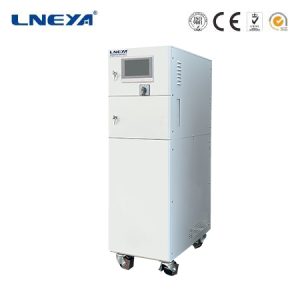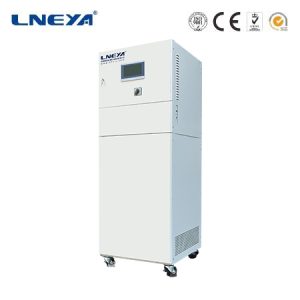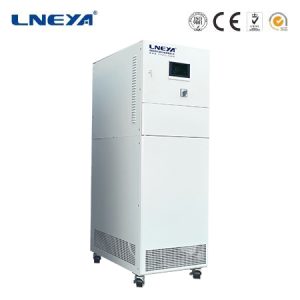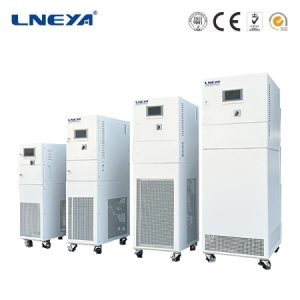Liquid Cooled Server Cabinet
Kontaktieren Sie uns noch heute für die perfekte Lösung zur Temperaturkontrolle
Technical principles of liquid cooled server cabinet
Liquid cooling technology is a cooling method that uses liquid as a heat dissipation medium to take away the heat of the equipment in the server cabinet.
Specifically, liquid cooling technology takes advantage of the high thermal conductivity of the liquid. It pumps the liquid from the condenser to the various equipment in the server cabinet, absorbs the heat generated by the equipment, and then flows back to the condenser for cooling. The cycle repeats to achieve Efficient cooling effect.
1. Technical principle pictures
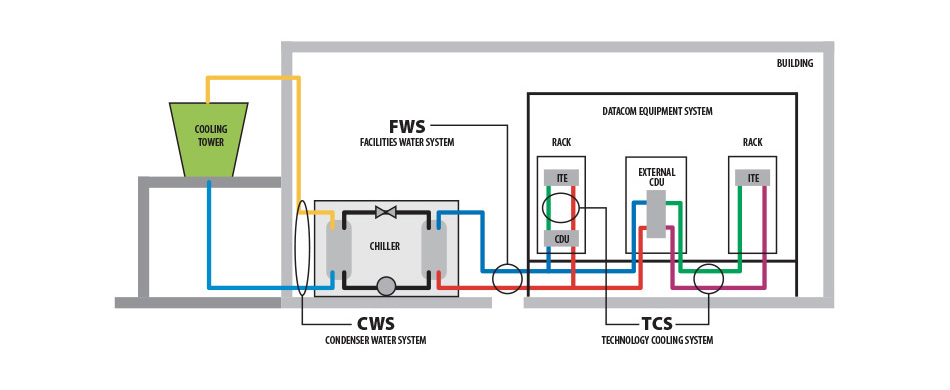
The liquid supply system is responsible for providing cooling liquid, usually a mixture of deionized water and ethylene glycol.
The liquid circulation system consists of pumps, pipes and heat exchangers, and is responsible for bringing the heat absorbed by the liquid from the server cabinet back to the cooling system for cooling.
The cooling system is mainly composed of cooling tower, chilled water system and heat dissipation system, which is responsible for transferring the heat in the liquid to the external environment.
The control system is mainly responsible for controlling parameters such as liquid temperature and flow rate to ensure the stable operation of the liquid cooling system.
The monitoring system is responsible for monitoring the operating status of the liquid cooling system in real time and detecting and handling faults in a timely manner. (The monitoring system is not listed in the picture yet)
internal structure of liquid cooled server cabinet
It mainly consists of the following parts:
Server equipment area: An area where servers are placed. The heat generated by the equipment is dissipated through the liquid cooling system.
Liquid circulation pipe: The channel for liquid circulation in a liquid cooling system, including a liquid inlet pipe, a liquid outlet pipe and a circulation pipe.
Condenser: A device that transfers heat in a liquid to the external environment, usually using a plate heat exchanger or a shell and tube heat exchanger.
Cooling water tower: A device that provides a cooling water source to transfer heat to the atmospheric environment.
Pump: A device used to drive liquid circulation, usually a centrifugal pump or a screw pump.
Monitoring system: Equipment for real-time monitoring and control of the operating status of the liquid cooling system, including temperature sensors, pressure sensors, liquid level sensors, etc.
Electrical control system: used to control the electrical components of the liquid cooling system, including control cabinets, power supplies, etc.
Maintenance structure: including maintenance facilities such as cabinet doors, observation windows, and filters.
The development trend of liquid cooled server cabinet
With the rapid development of cloud computing and data centers, the cooling problem of server cabinets has attracted more and more attention. As a new cooling method, liquid cooling technology has broad application prospects in the field of server cabinets. In the future, there will be the following development trends:
1. Higher energy efficiency
As the scale of data centers continues to expand, the energy consumption requirements for cooling systems are becoming higher and higher. Therefore, the energy efficiency issue of liquid cooling technology is an important direction for future development. By optimizing the design of the liquid cooling system and selecting efficient pumps and heat exchangers, the energy efficiency level of the liquid cooling system can be improved, thereby reducing the energy consumption of the data center.
2. Lower noise
The traditional air cooling system produces a lot of noise due to the rotation of the fan, which is detrimental to the operating environment of the data center. The noise generated by equipment such as pumps and fans of liquid cooling systems is relatively small, which can better meet the needs of data centers for low-noise environments. In the future, the noise level of liquid cooling equipment can be reduced by further optimizing the design and technical parameters of the liquid cooling system.
3. More flexible and scalable
With the rapid development of cloud computing and virtualization technology, the scale of data centers continues to expand, and the demand for the number and configuration of server cabinets continues to increase. Therefore, the design of liquid-cooled cabinets needs to be flexible and scalable to adapt to the needs of data centers of different sizes and server cabinets of different configurations. Through the modular design method, each component of the liquid cooling system can be standardized and universally designed to facilitate later expansion and maintenance.
Technical advantages of liquid cooled server cabinet
1) In terms of computing power and energy consumption
The fully liquid-cooled cabinet can achieve high computing power density. A single cabinet supports up to 160 CPUs, and one cabinet can support ten cabinets. It also achieves high power supply density and can support a power density of 100kW in a single cabinet. Compared with traditional data centers, the power density is increased by 10 More than times, the space utilization rate is increased by 5-10 times. At the same time, the heat exchange capacity of the back door reaches 20kW, and the energy consumption is less than 2kW.
2) In terms of heat exchange efficiency
The all-natural coolant cold-back door is closer to the heat source than the air-conditioning system, which avoids the local hot spots generated by some high-power components that were originally air-cooled by air-conditioning to achieve efficient heat exchange, and the energy efficiency ratio COP can reach more than 10.
3) In terms of safety and reliability
Relying on advanced pipeline welding technology, the fully liquid-cooled cabinet system has a strong pressure-bearing capacity of 1.6MPa, ensuring stable operation of the system; it also adopts a four-layer leak-proof design, and leakage monitoring devices are deployed on the surface of the cold plate nodes. Once a liquid leakage is detected, the system automatically shuts down to protect the safety of the equipment. At the same time, leakage monitoring is deployed at the bottom of each cabinet, the all-natural coolant cold back door, and the entire machine room pipeline.
Prospects and challenges of liquid cooled server cabinet
As a new cooling method, liquid cooling technology has broad application prospects in the field of server cabinets.
E-Mail: info@lneya.com WeChat ID: +8615251628237 WhatsApp: +86 17851209193
 LNEYA
LNEYA
 简体中文
简体中文














































































